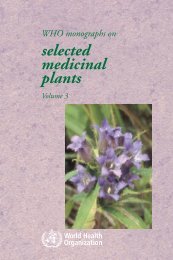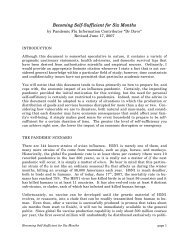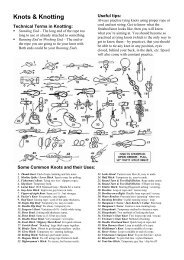You also want an ePaper? Increase the reach of your titles
YUMPU automatically turns print PDFs into web optimized ePapers that Google loves.
PORE FUNGI<br />
The pores on the under side of the cap are dark brown, soft,<br />
and from 1/3 to i inch long. The stem is firm, from 3 to 6 inches<br />
long, less woolly than the cap. A newly expanded specimen will<br />
have a ring near the upper part of the stem, but this soon withers<br />
and disappears.<br />
This fungus is common during the summer and fall, usually<br />
growing in groups on the ground in \vooded areas. Its edibility<br />
is good, and it cannot be confused with any other fungus. Because<br />
of its naturally soft texture and dark interior, decay or the<br />
presence of maggots is less obvious than in many other fungi, and<br />
one must be careful to select only fresh, sound specimens for<br />
eating.<br />
GENUS Fistulina<br />
Eminently edible: FISTULINA HEPATICA (Beefsteak<br />
Fungus)<br />
Since this mushroom is not common in the North Central States<br />
the author has been unable to study it at first hand, but in the<br />
East, where it is common on the trunks and stumps of living or<br />
dead trees, it is unmistakable and of desirable edibility. The plants<br />
grow out horizontally from the tree. The cap is blood-red when<br />
fresh, liver-shaped, with a wavy or scalloped margin. The flesh<br />
of the cap is soft, thick, and juicy, and the pores on the under<br />
side are yellowish. A short, lateral stem is sometimes present.<br />
95
















